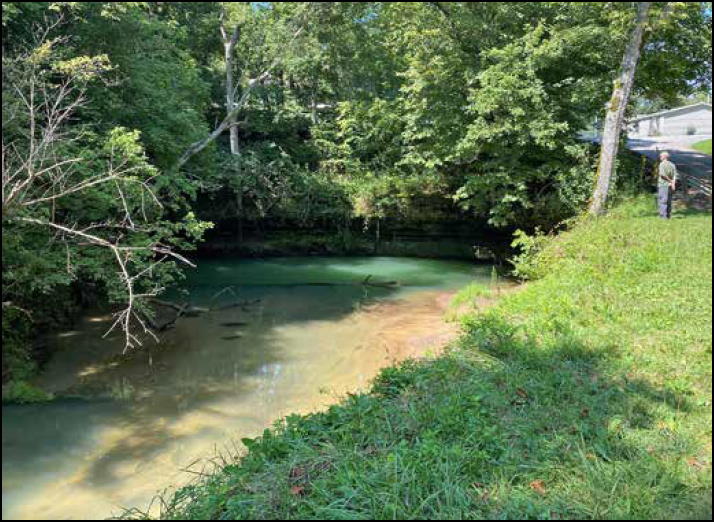Speleogenesis
 In time, vadose water seeping down through bedrock fissures reaches an area of saturation known as the phreatic zone or water table. Here, water moves laterally along bedding planes, slowly dissolving still more of the bedrock, and joining other waters until they eventually emerge at the surface in the form of a spring. This particularly well- developed spring is the Orangeville Rise; a National Natural Landmark that is also part of the Lost River system. Drainage from more than 40 square miles of land to the north and northeast finds its way through underground channels to resurface here, forming a "new" headwaters for Lost River.
In time, vadose water seeping down through bedrock fissures reaches an area of saturation known as the phreatic zone or water table. Here, water moves laterally along bedding planes, slowly dissolving still more of the bedrock, and joining other waters until they eventually emerge at the surface in the form of a spring. This particularly well- developed spring is the Orangeville Rise; a National Natural Landmark that is also part of the Lost River system. Drainage from more than 40 square miles of land to the north and northeast finds its way through underground channels to resurface here, forming a "new" headwaters for Lost River.
Eventually, local surface streams deepen their valleys, lowering the water table and allowing phreatic passages to drain. Thus, most solution caves are abandoned spring water conduits. In this manner the submerged passage currently found at Orangeville will someday become the spring entrance to a cave. Such passages are characteristically circular or oval in cross section as limestone is dissolved on all surfaces.
From this point, the primary mechanism for enlarging the passage is erosion, although some dissolution still takes place. Sinkholes continue to funnel rainwater into the subterranean passage, and collapse of one or more of these sinkholes may provide new entry points. Bank erosion and down-cutting mechanisms within the cave may create meander loops or any of the other features commonly found in surface streams. A combination of phreatic followed by vadose action often creates passages with a “keyhole” cross section — a round-shaped passage at the top with a trench or “canyon” at the bottom.
The hardness of the rock, hydrostatic head, orientation of the original fissures, prevalence of vadose versus phreatic dissolution, and amount of subsequent erosion all determine the final structure of cave passages.

